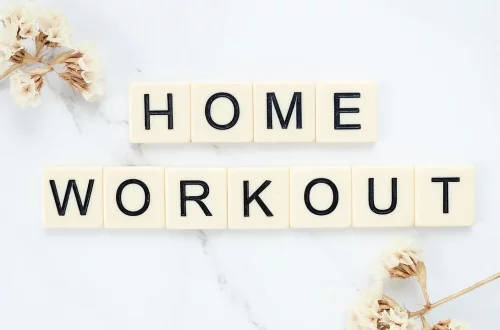
Real vs Fake Boobs: Understanding the Differences and Choices
The conversation surrounding body image and self-esteem is ever-evolving, reflecting broader societal changes. Among the many facets of this dialogue, breast aesthetics often take center stage. Whether through natural development or surgical enhancement, women face numerous decisions regarding their bodies that can significantly impact their self-perception and confidence. The choice between natural breasts and implants isn’t merely physical; it encompasses emotional, psychological, and societal dimensions that can influence personal choices.
In recent years, the normalization of cosmetic procedures has led many to openly discuss their preferences and experiences. This has fostered an environment where women can share their journeys, whether they choose to embrace their natural bodies or enhance them through medical means. As these conversations unfold, it becomes increasingly important to recognize the nuances and implications involved in the decision-making process. Understanding the distinctions between real and fake breasts can empower individuals to make informed choices, ultimately fostering a positive body image that aligns with their unique identity.
As we delve deeper into this topic, we will explore the various aspects that differentiate natural breasts from implants, the motivations behind each choice, and the cultural perceptions that shape these decisions. Each woman’s journey is personal, and acknowledging the diverse paths can lead to a more inclusive understanding of beauty and self-acceptance.
Natural Breasts: Characteristics and Perceptions
Natural breasts, often regarded as symbols of femininity, exhibit a variety of shapes, sizes, and textures. The characteristics of natural breasts can be influenced by several factors, including genetics, age, body weight, and hormonal changes. This diversity is a reflection of the unique experiences women undergo throughout their lives, from puberty to pregnancy and beyond.
One of the most notable features of natural breasts is their softness and the way they change with movement. The natural breast is composed of glandular tissue and fat, which contributes to its pliability and organic feel. This is often cited as a key difference when compared to implants, which may have a firmer, less natural texture.
Culturally, natural breasts are celebrated and appreciated in various contexts. They are often associated with youthfulness and vitality, but societal standards can vary widely. In some cultures, larger breasts are considered more attractive, while in others, smaller sizes may be favored. These perceptions can significantly influence how women view themselves and their bodies.
Moreover, the acceptance of natural breasts has been bolstered by movements advocating for body positivity and self-love. These initiatives encourage women to embrace their bodies as they are, promoting the idea that beauty is not confined to a specific standard. However, the pressure to conform to certain ideals can still weigh heavily on many individuals, prompting them to consider alternatives.
Ultimately, the choice to embrace natural breasts can be seen as an empowering decision for many women. It allows for a celebration of individuality and fosters a deeper appreciation for the body’s natural variations. The journey towards self-acceptance often involves understanding and appreciating one’s body, which can lead to increased confidence and well-being.
Breast Implants: Options and Considerations
Breast implants have become increasingly popular over the years, offering women the opportunity to enhance their breast size and shape. The decision to undergo breast augmentation is multifaceted and often stems from personal desires for improved aesthetics, confidence, or body image.
There are several types of breast implants available, including saline and silicone varieties, each offering distinct advantages and disadvantages. Saline implants are filled with sterile saltwater and tend to be easier to adjust during surgery. They can also be inserted through smaller incisions. Silicone implants, on the other hand, have a more natural feel and are pre-filled with silicone gel, which some women prefer for its realistic appearance.
When considering breast augmentation, it is essential to understand the potential risks and benefits. On the positive side, many women report increased self-esteem and satisfaction with their appearance after surgery. However, there are also risks, including the possibility of complications such as infection, scarring, or implant rupture.
Consultation with a qualified plastic surgeon is crucial in this process. A good surgeon will provide information on the different types of implants, the surgical procedure, and recovery expectations. They can also help set realistic expectations based on individual body types and lifestyle factors.
Culturally, the perception of breast implants has shifted over time. While once stigmatized, cosmetic surgery is now more widely accepted as a personal choice. Many public figures openly discuss their experiences with breast augmentation, contributing to a growing narrative that celebrates the right to choose one’s body image.
Ultimately, the decision to undergo breast augmentation is deeply personal. It involves careful consideration of one’s motivations, desired outcomes, and the potential impact on one’s life. Each woman’s journey is unique, and understanding the implications of this choice can lead to a more informed and empowered decision.
Comparing Experiences: Emotional and Psychological Aspects
The emotional and psychological aspects of choosing between natural breasts and implants are significant. Each choice carries its own set of feelings, from confidence and empowerment to insecurity and societal pressure. Understanding these emotional dimensions can be critical in navigating the decision-making process.
For many women who opt for breast augmentation, the surgery is often seen as a pathway to improved self-image and confidence. The anticipation of a new look can be exhilarating, and many report feeling more attractive and feminine post-surgery. However, this transformation can also lead to anxiety and concerns about societal perceptions. Women may grapple with the fear of judgment or the stigma that can accompany cosmetic procedures.
Conversely, women who embrace their natural breasts may experience a range of emotions as well. While many find empowerment in celebrating their bodies as they are, they may also encounter societal pressures that challenge their self-acceptance. The journey towards body positivity is often fraught with hurdles, including comparisons to idealized images portrayed in media and culture.
The psychological implications can also extend to interpersonal relationships. Women with implants may feel a shift in how they are perceived by others, which can impact their self-confidence and sense of identity. On the other hand, those who choose to embrace their natural bodies might find solidarity and support within communities that advocate for body positivity, fostering a sense of belonging.
Support systems, whether from friends, family, or online communities, play a vital role in shaping one’s experience. Open conversations about body image can help alleviate feelings of isolation and promote a healthy dialogue around beauty standards.
Ultimately, understanding the emotional and psychological aspects of breast choices can encourage women to seek support and make informed decisions that align with their values and self-worth, regardless of the path they choose.
Societal Influences on Body Image and Choices
Societal influences significantly shape women’s perceptions of their bodies and the choices they make regarding breast aesthetics. From media portrayals to cultural norms, these influences can create a complex landscape that affects self-esteem and body image.
Media representations play a powerful role in shaping beauty standards. Television, movies, and social media often highlight specific body types, leading many to feel pressure to conform to these ideals. The prevalence of digitally altered images can distort perceptions of reality, making it challenging for women to appreciate their natural bodies.
In response to these pressures, there has been a rise in movements advocating for realistic body representation and diversity in beauty standards. Campaigns promoting body positivity encourage women to embrace their unique attributes and challenge conventional notions of attractiveness. These movements aim to create a more inclusive dialogue around beauty, emphasizing that all bodies deserve respect and celebration.
Cultural norms also dictate how women view their bodies and the choices they make. In some societies, larger breasts are seen as desirable, while in others, smaller sizes may be preferred. These cultural standards can influence personal choices, leading women to seek surgical enhancements or embrace their natural bodies based on societal expectations.
Peer influence is another factor that can shape decisions about breast aesthetics. Women often look to friends and family for guidance, and the experiences of those around them can impact their perceptions and choices. Open conversations about body image and personal experiences can foster a supportive environment where women feel empowered to make decisions that resonate with their values.
Ultimately, societal influences are pervasive, but awareness of these factors can empower women to make informed choices about their bodies. By challenging societal norms and celebrating diversity, individuals can foster a more inclusive understanding of beauty that honors personal choices and promotes self-acceptance.
In conclusion, the choice between natural breasts and implants is deeply personal, influenced by a myriad of factors ranging from emotional and psychological aspects to societal pressures. Each woman’s journey is unique, and embracing that individuality is paramount to fostering a positive body image.
**Disclaimer**: This article is not intended as medical advice. For any health-related concerns, please consult with a qualified medical professional.




